By Michael D. Hull
A series of swift victories took Japanese troops to the gates of India in 1941-1942 when British and Indian units fell back to the Assam hills northwest of Burma.
Relief For Beleaguered British-Indian Army
The Chinese were fighting 25 Japanese divisions, and to help their allies, the British and Americans flew in supplies over the rugged Yunan Mountains. The British-Indian Army, poorly equipped, outnumbered, and untrained in jungle fighting, was repulsed in its first Arakan offensive in 1943. It was also harassed by Indian nationalists, sympathetic to the Japanese, who cut road and rail lines.
But, in February 1943, a special British guerrilla force marched 1,500 miles behind Japanese lines in sweltering, inhospitable Burma, cutting railway and supply links, making friends with the natives, and eroding the myth of Japanese invincibility in jungle fighting. This force was the Chindits, a brigade-sized “long-range penetration group” comprising British, Gurkha, and Burmese troops, led by the bearded, eccentric Maj. Gen. Orde C. Wingate, a veteran of Palestine and Abyssinia.
Chindit Fighters Teach Lessons To Both Sides
The Chindits attacked Japanese outposts, bridges, and railway lines, but their success was limited and they lost a third of their men and equipment before withdrawing to India. The first Chindit campaign convinced the Japanese that their lines along the great Chindwin River were not strong enough, and led to an offensive against Kohima and Imphal. The British learned valuable lessons in jungle tactics and airborne-supply operations. A second Chindit foray successfully severed enemy communications early in the summer of 1944.
More than a hundred miles to the east of their operations, meanwhile, an American guerrilla force fought and won five major battles and minor actions. The 5307th Composite Unit (Provisional) was a 3,000-man, three-battalion force that infiltrated the Japanese lines and pushed forward 20 miles a day through the perilous, almost impenetrable jungles. All volunteers specially trained in jungle fighting, they were the first and only American infantrymen to see action on the Asian mainland in World War II. In a few bitter months, they became a legend—“Merrill’s Marauders.”
Unassuming Officer Commanded Love and Respect
The leader of this force was a brilliant but obscure career Army officer named Frank Dow Merrill. He was a tall, well-built man with graying sandy hair who smoked a pipe endlessly and joked with his associates in a cool New England voice. He had a weak heart, poor eyesight, and little experience in commanding troops. But Frank Merrill, although he did not look like the ideal leader for a hit-and-run combat unit based on the tradition of Rogers’ Rangers and Morgan’s Raiders, was a man of intelligence and unlimited tenacity. His men both respected and loved him, and the Chinese held him in an esteem second only to Maj. Gen. Claire L. Chennault of “Flying Tigers” fame.
Descended from a Revolutionary War family, Merrill was born in Hopkinton, Mass., on December 4, 1903, and raised in nearby Amesbury. Deciding that he wanted to become a soldier, he tried unsuccessfully to gain an appointment to the U.S. Military Academy at West Point. So, at the age of 19, Merrill enlisted in the Regular Army. He was shipped to Panama with Company A of the 11th Engineer Regiment, and rose in three years from private to staff sergeant.
Persistence Pays Off In Gaining West Point Commission
Young Merrill was ambitious. While soldiering in Panama, he took competitive examinations for entrance to West Point, trying five times and failing each time because of astigmatism, for which he wore eyeglasses. But a sixth attempt proved successful, and he joined the Long Gray Line in the summer of 1925. He graduated in 1929 and was commissioned in the cavalry. He served in Vermont and Virginia, studied special weapons at the Watertown (Mass.) Arsenal, and was awarded a bachelor of science degree from the Massachusetts Institute of Technology in 1932.
Merrill served later in Kansas and Missouri, with the Civilian Conservation Corps, and became a cavalry school instructor. He then spent three years in Japan as an assistant military attaché and language student at the U.S. Embassy in Tokyo. He was promoted twice while in Japan, to captain in 1939 and to major (temporary) in 1941.
Displaying Courage At The First Test
In November 1941, Merrill was assigned to duty with the U.S. Army in the China-Burma-India Theater of Operations, and flew to Manila to serve as assistant chief of staff (intelligence) to General Douglas MacArthur. The young officer was on a flying mission to Rangoon, Burma, when the Japanese attacked the U.S. Pacific Fleet at Pearl Harbor on December 7, 1941. He was reassigned as an aide to Lt. Gen. Joseph W. Stilwell and served as a liaison officer with the British and Chinese forces in Burma. Merrill was later awarded the Purple Heart for “meritorious acts of essential service, accurate and careful observations, and providing invaluable and dependable information upon which action was based.”
When Stilwell’s forces “got run out of Burma” by the advancing Japanese in the spring of 1942, Merrill hiked into India with the tough, wiry, old officer and what Stilwell described as his “polyglot party of weary, hungry, sick American, British, and Chinese army officers; enlisted men; Burmese nurses; Naga, Chin, and Shan tribesmen; and a devil’s brew of Indian and Malayan mechanics, railwaymen, cooks, refugees, cipher clerks, and mixed breeds of Southern Asia.” With Japanese troops in pursuit, Stilwell pushed his fleeing column through dense jungles, across rivers, and over mountains to refuge in British India. It was a grueling trek that took its toll, and Major Merrill collapsed beside a stream.
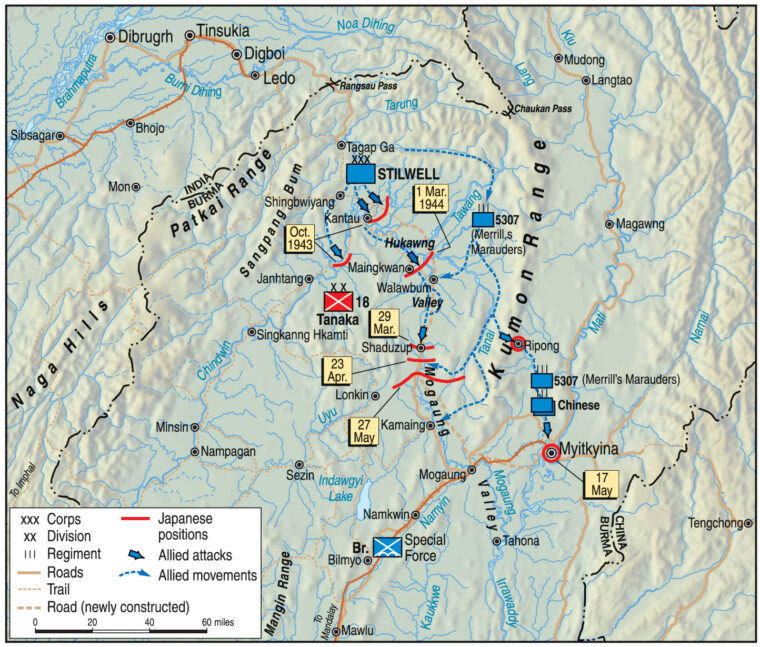
“Onward, Christian Soldiers”
But, with the motley group supplementing its half rations with roots and herbs, and the Burmese nurses singing “Onward, Christian Soldiers,” it managed to reach the British corps headquarters at Imphal, India.
Stilwell was hailed as a hero, but he retorted, “I claim we got a hell of a beating. We got run out of Burma, and it is humiliating as hell. I think we ought to find out what caused it, go back, and retake it.” Merrill, meanwhile, was promoted to temporary lieutenant colonel, and he helped Stilwell make plans to return and recapture Burma.
Merrill was promoted to temporary colonel early in 1943, and that October he was given command of a regiment-sized force of U.S. soldiers who had volunteered for a nameless “dangerous and hazardous mission.” Actually, the 5307th Composite Unit (Provisional), codenamed Galahad, was to spearhead a U.S.-Chinese offensive across northern Burma to seize Myitkyina (pronounced “Mitchinaw”), the key Japanese defense and air base from which their fighters menaced the Allied air route over the Hump to China.
Enormous Attrition Rate Expected
The War Department expected that by the time the force was withdrawn from its assignment, it would have suffered 85 percent casualties through action and sickness, and that the survivors might require three months of hospital treatment and rest.
The new unit was to operate on a semi-guerrilla basis, with small groups of troops with heavy firepower carrying out long-range harassment forays behind enemy lines. Merrill’s Marauders would undertake surprise encirclements and set up roadblocks behind the Japanese front, as Stilwell’s mainly Chinese units drove slowly toward Myitkyina. The Marauders would be the U.S. Army’s counterpart to Wingate’s Chindits.
The American volunteers came from the jungle-training camps of Trinidad and the Panama Canal Zone, and from the Pacific Theater. They included a full battalion of Guadalcanal veterans already thoroughly infected with malaria. There were Army regulars itching for some action, and there were many young, unmarried zealots. The unit also had its share of stockade commandos—misfits, drunks, and troublemakers who had been “encouraged” to volunteer.
Merrill Tasked With Forging A Motley Crew
Merrill, who was advanced to temporary brigadier general in November 1943, threw himself into the biggest challenge of his career as he began training the 3,000 men in jungle fighting and welding his unit into an effective long-range penetration force. Now aged 39, he lacked experience with infantry; his background had been primarily in cavalry and staff work. But he was open and amiable and exuded optimism and self-confidence.
Merrill transmitted his enthusiasm to his men. He overworked himself and his aides, but he was fair to all and concerned with the welfare of both officers and enlisted men. Philip Piazza, who later headed the Merrill’s Marauders Association, recalled, “The men actually idolized him. A GI would walk up to him and speak, and he would actually sit down and talk with him.”
Meanwhile, Merrill was awarded the Legion of Merit for his planning work from January to November 1943. The citation listed his “foresight, superior judgment, energy, and devotion to duty” which “contributed greatly to the war effort of the Allied nations in this theater.”
“Take Your Americans And Stick ‘Em!”
The Marauders trained in India for three months with the British Chindits, but Stilwell, a confirmed Anglophobe, fought proposals to have the Americans serve under Wingate’s command. “Vinegar Joe” Stilwell wanted Merrill’s force for his own purposes in northern Burma, and when he got his way, the British commander said angrily, “You can tell General Stilwell he can take his Americans and stick ’em!”
The 5307th was divided into three battalions, with each battalion split into two combat teams. Like the Chindits, they were intended to function as a mobile force relying on mule transport and air-supply drops. But Stilwell, who dismissed the Chindits’ hit-and-run tactics as “shadow-boxing,” believed the Marauders should be used where and when needed most. To start with, he intended to send Merrill’s men around and behind Lt. Gen. Shinichi Tanaka’s crack Japanese 18th Division, veterans of the Singapore and Rangoon conquests, in a “left hook” while the Chinese troops pressed the enemy frontally and on the flanks.
Tanaka had been conducting delaying actions while retreating slowly before the Chinese, and Stilwell hoped that if he could force the Japanese to stand and fight, with the Marauders behind them, they would be swiftly destroyed.
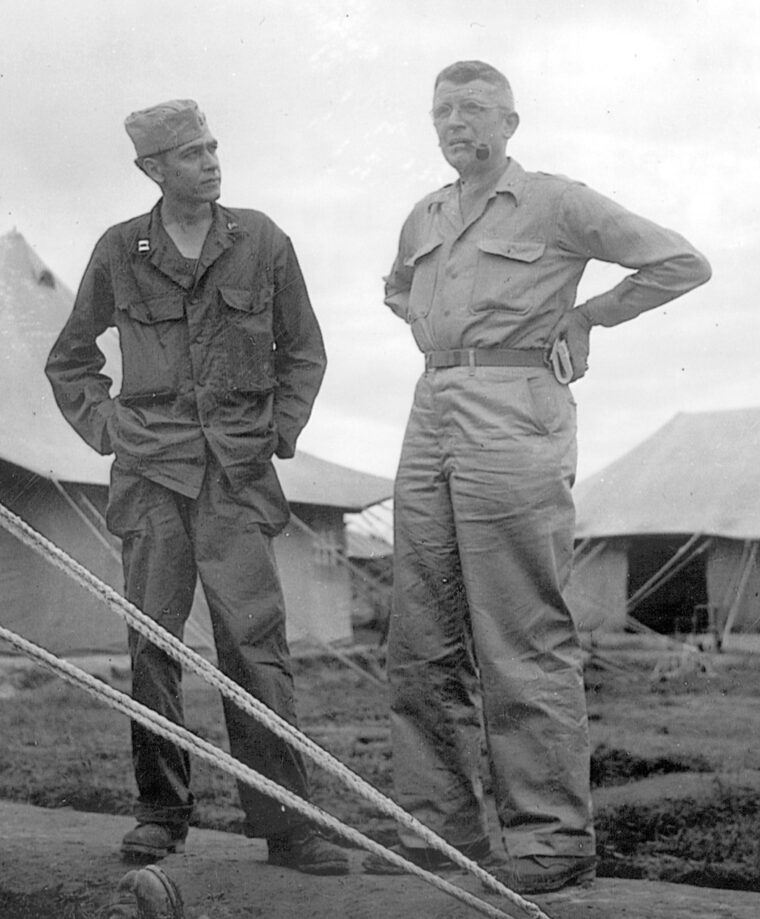
Marauders Set Out On Their First Mission
By February 1944 Merrill’s Marauders were ready to jump off on their first mission. They would be the first American infantrymen to fight on the Asian mainland. “We will walk back into Burma,” Merrill told his men simply.
The force moved by train to Ledo in the northwest Indian province of Assam, and then set out on a 140-mile circling march to the rear of Japanese troop concentrations at Maing kwan, Burma. Through constant rains, Merrill’s men slogged over the Naga Hills, averaging 20 miles a day. They advanced cautiously through sweltering, disease-ridden jungle, and “iron rations” were dropped to them by C-47 transports of the U.S. Tenth Air Force based in India. The Marauders were handicapped by having to train their pack animals because a shipment of 600 mules had been sunk at sea.
The force left Stilwell’s headquarters at Shingbwiyang and moved to set up a roadblock 10 miles behind the Japanese 18th Division at Walawbum, a village near the southern end of the Hukawng Valley. But the wily General Tanaka sensed that Stilwell was trying to surround him, so he decided to throw the bulk of his division against the force closing the gap. He learned on March 1, 1944, that American troops were behind him at Walawbum, so he promptly attacked.
Wholesale Slaughter
The Japanese troops fixed bayonets and charged at the Marauders repeatedly, but the Americans stood firm. Intensive training paid off in their first action, and they proved to be both tough and tenacious. The Japanese came on with cries of “Banzai!” and the Marauders replied with their own battle cry, a two-syllable obscenity delivered in a kind of wolf howl. The fighting was fierce. During one desperate attack, enemy bullets punctured the water-cooling jacket of a U.S. machine gun. The crew poured in precious water from their canteens and simply kept on firing. One Marauder battalion went for 36 hours without food or water, but still beat off every assault.
Part of Tanaka’s division was trapped between the Chinese and the Marauders. “This isn’t battle,” reported correspondent Frank Hewlett, “it’s wholesale slaughter.” In five days of action, General Merrill’s soldiers killed 650 Japanese and wounded as many more. The Americans lost only seven dead and 37 wounded.
Defeated Japanese Retreat Via Secret Trail
Eventually, Tanaka called off his attack before the main Chinese force could reach him. The Japanese leader withdrew his men over a secret trail that his engineers had cleared a few days before. It was estimated that a total of 2,000 Japanese soldiers had been killed, and as many more wounded or captured. Stilwell had won his first major victory in Burma, and his forces now controlled the Hukawng Valley. The Marauders, meanwhile, had acquitted themselves valiantly in their first action.
Farther south now, Wingate was pressing the Japanese by thrusting his five Chindit brigades “in the enemy’s guts.” He established his forces near Indaw and cut the railway lines, ensuring that the Japanese 18th Division would be isolated from the rest of the enemy in Burma. Tanaka would be forced to retreat from northern Burma.
By the middle of March 1944, Stilwell’s Chinese units had fought their way down the Hukawng Valley and were nearing the Jambu Bum Ridge, which barred entry into the Mogaung Valley. Stilwell decided to try again to ensnare Tanaka by deploying the Marauders on two sweeps to the east that would bring them again behind the Japanese division.
Two Weeks To Cover 30 Miles
The Marauders’ 1st Battalion would swing through the mountains and set up a roadblock near Shaduzup, on the road running south of the Jambu Bum Ridge. The 2nd and 3rd battalions were to make a wider, longer hook to the east and come in behind Tanaka, taking up a blocking position farther down the Mogaung Valley.
The battalions loaded their mules with ammunition and rations and moved out. General Merrill led the main group, the 1st Battalion, along a trail skirting the Jambu Bum Mountains toward Shaduzup. The trail ran close to the Japanese, and the Americans kept running into enemy patrols. In one stretch of a mile and a half, the battalion fought eight minor engagements. Eventually, in order to avoid the Japanese, the battalion commander decided to leave the trail and head through the mountains.
It was a nightmarish struggle up steep, timbered slopes, and the 1st Battalion took two weeks to cover 30 miles. Foot by foot, the muleteers had to hack a path through dense bamboo thickets while the rest of the column waited. The soldiers had to stand rather than sit because the slopes were so steep.
Elephant Leeches, Dysentery, Hunger, And Maggots
By now, many of the Marauders were suffering from dysentery, and all were being assaulted by jungle insects. Dumdum flies and tiny buffalo flies bit them day and night, and various types of leeches, from common one-inchers to elephant leeches that grew to almost six inches in length, dropped from low-lying tree branches and fastened themselves to men’s skin and clothing. All of Merrill’s men were soon oozing blood from leech bites, and stinking rot filled their boots.
The mules suffered even more. Their fetlocks ran with blood and crawled with maggots that hatched in the open wounds. The Marauders burned the leeches off their own sweating bodies with lighted cigarettes, or removed them with a Burmese hill-tribe mixture of quicklime, kerosene, and tobacco juice.
Merrill’s struggling soldiers were hungry all the time. They subsisted on K-rations, canned meat, cheese, hardtack biscuits, chocolate, date bars, powdered coffee, and chewing gum, but there was never enough. The supply drops were infrequent.
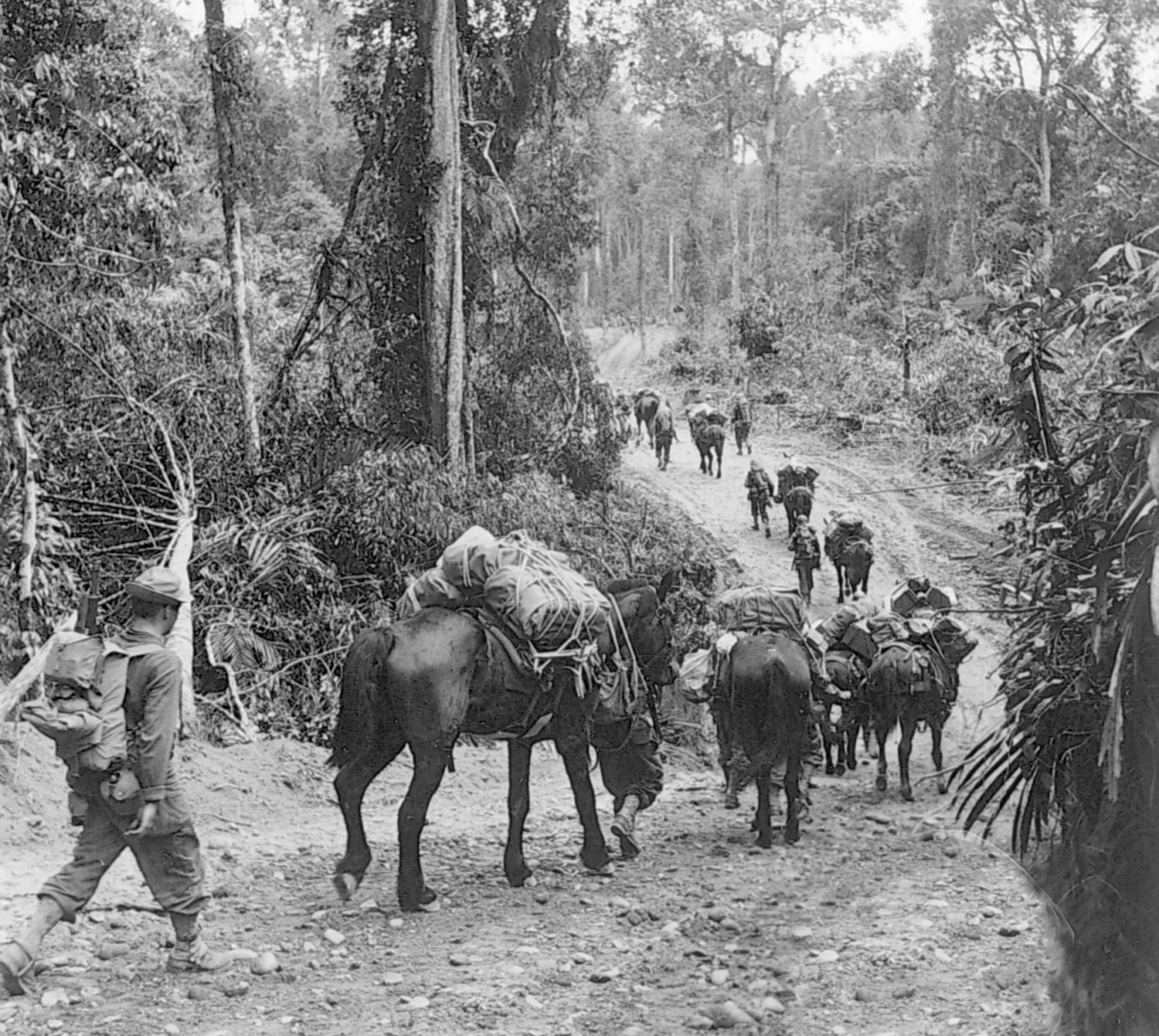
Shoulder To Shoulder With His Men
Yet they stumbled and hacked their way on over the tangled gullies and crags, with Merrill constantly encouraging them. He walked with his men, outworking and overworking them, and was seldom more than a hundred yards from his fighting perimeter. An able but obscure professional soldier until now, Merrill rose magnificently to the challenges of combat in Burma, the war’s most demanding theater. He gave all that he had to give. If a precious radio set broke down, he would repair it himself and then outwit the Japanese listening in by telling them a fairytale in their own language. This would dumbfound them long enough so that he could rasp out a message in English.
Eventually the exhausted Marauders made their way down into the Mogaung Valley. But the enemy was encamped in the area where Merrill had planned to set up his roadblock, so the Americans waited quietly through the night until the Japanese troops started building their cooking fires in the early morning. Then, without warning, the Marauders fixed bayonets and attacked. The Japanese fled. Merrill established his roadblock, and the 1st Battalion was relieved by Chinese troops.
Cutting Off The Japanese At the Pass
The elusive Japanese 18th Division had extricated itself from Stilwell’s trap while the Chinese lay in wait. The 2nd and 3rd Marauder Battalions had been making their wider sweep eastward and down the Tanai and Hkuma Valleys. The 2nd Battalion crossed the Mogaung River, and the 3rd stayed on the other side to protect the rear. When the 2nd Battalion moved to set up a roadblock near the village of Inkangahtawng, it ran headlong into a Japanese force of about 2,500 men. The enemy attacked fiercely, forcing the battalion to pull back across the river.
Stilwell then abandoned the effort to trap Tanaka’s division in the Mogaung Valley. Stilwell’s Chinese formations pushed laboriously down the Mogaung Valley toward Shaduzup as a Japanese battalion headed for the Hukawng Valley to hit the Chinese in the rear and on the side. So, Stilwell ordered Merrill to block the trail north of the village of Nhpum Ga and stop the enemy from reaching their objective. General Merrill picked the 2nd and 3rd Battalions for the task. The soldiers were still weary from their long march and last action, but they managed to reach their destinations in two days. The 2nd Battalion occupied Nhpum Ga, and the 3rd moved three miles farther north to Hsamshingyang.
At Nhpum Ga, the 2nd Battalion hurriedly dug a defensive perimeter on a hilltop about 400 yards long and 200 feet wide. The Americans hardly had time to get into position before the Japanese attacked. For a week, enemy artillery and mortar fire pounded the position, but the Marauders hung on. More than a hundred of their precious mules were killed. The Americans could not bury the animals because the ground was too rocky, and the stench of the bloated bodies reeked through the Marauders’ foxholes.
Marauders Caught In Japanese Siege
The Japanese fired on, and when the barrages let up, the enemy infantry charged. Again and again screaming “Banzai!” they pressed on, and still the American defenders stubbornly resisted. To add to their woes, the Marauders began to run out of water, and they were rationed to half a cup daily of stagnant, muddy stream water.
Artillery pieces were dropped to help Merrill’s men, and the action at Nhpum Ga was so close run that the American gunners ignored their gun sights and simply fired in the direction of the tenacious enemy. The Marauders were also able to hold their tenuous position partly because of the heroic efforts of Sergeant Roy H. Matsumoto, a Japanese American, who would crawl out beyond the perimeter each night and listen to the enemy. With the information he gathered, the defenders were ready for the next Japanese moves. Fifty-four enemy soldiers died when Matsumoto shouted “Charge, charge!” in Japanese, and lured them into booby-trapped foxholes. The 2nd Marauder Battalion was trapped at Nhpum Ga for almost two weeks.
Merrill Succumbs, But Refuses Evacuation
During the siege, Merrill started leading the 3rd Battalion to the relief of the 2nd, but three miles from Nhpum Ga the general was struck down by a coronary thrombosis and malaria. For three days he refused to be evacuated, but eventually he was ordered out by Stilwell, aboard “a plane which landed virtually under the noses of the Japanese.” On April 11, 1944, Merrill was flown to a U.S. Army hospital in India. He refused to be evacuated from the theater, however.
Merrill’s executive officer, Lt.Col. Charles N. Hunter, meanwhile, took command of the Marauders. A seasoned infantryman and jungle veteran of the Philippines and Panama, Hunter told the officers of the 3rd Battalion on April 3, “Gentlemen, in the morning we start an attack that will drive through to the 2nd Battalion. It may take us two or three days, but we will get through.” Like Merrill, Hunter knew how to trick the Japanese. He staged a fake firefight in the jungle to draw some of the enemy off in another direction, and he had a message dropped by plane into the Japanese lines saying that an Allied Airborne force would be parachuting in some distance away.
Americans Out-Fox And Out-Race The Japanese
The 3rd Battalion attacked on April 4. The Marauders moved forward rapidly and aggressively. Hunter knew that it was standard practice for Japanese troops to withdraw under artillery fire or bombing, and then race back to their positions in time to blunt any subsequent infantry assault. So, the Marauders exploited this by crawling forward as far as possible under their own mortar fire, and then, when it lifted, dashing toward the momentarily unoccupied enemy foxholes. The Americans won the race.
Meanwhile, the 1st Marauder Battalion had started a round-the-clock forced march through the dense jungles to besieged Nhpum Ga from Shaduzup. Seven days after starting out, the battalion linked up with the other two battalions at Nhpum Ga. Now outnumbered, the enemy troops retreated into the jungle. On Easter Sunday, 1944, the bloody 13-day siege of Nhpum Ga was over. About 400 Japanese dead lay sprawled on the slopes where the 2nd Battalion had first set up its perimeter. The Marauders had lost 59 dead and 314 wounded.
The Marauders rested and regrouped. They had been in Burma only two months, but had been in action almost constantly. They were exhausted and shaking with malarial fever, but their morale was high. Merrill’s Marauders had proved themselves to be a fighting force.
British and American Commands Disagree On Price
The drive down the Hukawng and Mogaung Valleys, and the roadblocking actions of the Marauders, had proved costly enough to cause some high-ranking Allied officers to question whether the capture of Myitkyina, the largest town in northern Burma, was worth the price. Admiral Lord Louis Mountbatten, the Allied Supreme Commander in Southeast Asia, had misgivings, and believed that a continuation of the campaign was “unsound and should not be attempted.” He proposed an operation against the Rangoon area in southern Burma.
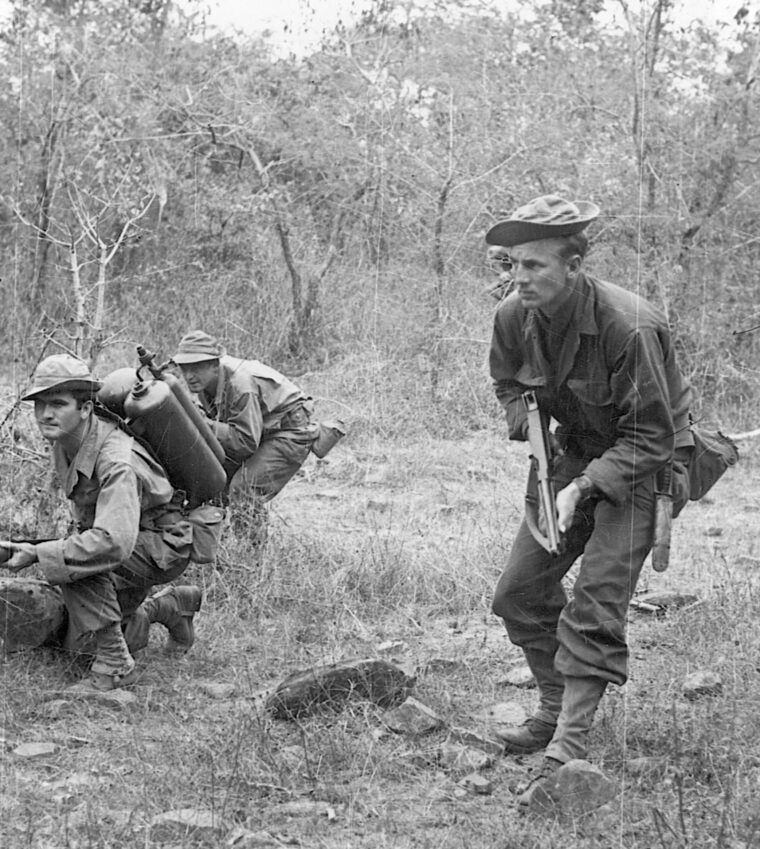
But General George C. Marshall, Army chief of staff, and the Joint Chiefs of Staff favored pushing on to Myitkyina, and at the end of April Stilwell received a radio message to that effect. He was then formally ordered to go ahead and capture Myitkyina.
The burden of the operation would fall on the weary Marauders. Many became angry because they had heard that the Chindits were supposed to be relieved after three months’ jungle duty, and they expected the same consideration. But “Vinegar Joe” had made them no such promise. Morale began to flag.
Ranks Thinned By Half
While some of Stilwell’s Chinese units attempted to engage Tanaka’s 18th Division, the Marauders, divided into three combat teams, would move off eastward in a long sweep to Myitkyina. The operation was code-named End Run, and Merrill’s men would be bolstered by two Chinese regiments and 300 Kachin guerrillas, aggressive Burmese tribesmen seconded from Office of Strategic Services Detachment 101 led by Lt. Col. William R. Peers. Enlisting the support of the Kachins had been undertaken by the Marauders’ British liaison officer, Captain Charles E. Darlington, who was known and respected among the tribesmen.
Stilwell knew that he was asking a lot of the Marauders, considering what they had been through. But he told General Merrill, then recuperating from his heart attack, that he had no choice. The Chinese, Stilwell pointed out, were not trained for long-distance maneuvers through the jungle and lacked the aggressiveness for such an undertaking.
The Marauder ranks had been thinned by about half due to casualties and disease. Men in a weakened condition would have to march 112 miles over a narrow mountain trail across the rugged, 8,000-foot Kumon Range to Myitkyina, and then battle the Japanese. It would require a supreme effort. Returning to duty in time for the offensive, Merrill tried to boost his men’s spirits, telling them that once they had seized the airstrip at Myitkyina no more would be asked of them until they had been sent back to India for a rest.
Stilwell Not a Favorite Of Marauders
Although the unit had displayed uncommon valor and fortitude in the jungle, Merrill’s Marauders still had neither colors nor insignia. None of them had been promoted or decorated. When Colonel Hunter complained to Stilwell’s staff, he was told curtly that the Marauders should spend more time fighting and less time worrying about promotions or medals. Although he was generally perceived as a soldier’s soldier, Stilwell was considered cold and uncommunicative by the Marauder officers. His name “was a red flag to a bull,” said one lieutenant. After a rare, brief visit to Merrill’s force, an enlisted man said, “I had him in my rifle sights. I could have squeezed one off, and no one would have known it wasn’t a Jap that got the son of a bitch.”
After a mere two weeks for rest, reorganization, and integration with the Chinese troops, Merrill’s Marauders started out on April 28, 1944, for their biggest task yet. The monsoon was not expected to begin until the middle of May, but the rain started coming down on May 1. General Merrill was back with his men as they sloshed through ankle-deep mud toward the Kumon Range. With his rifle at the ready and puffing on his briar pipe, he tried to encourage the dispirited soldiers onward and upward over the narrow trails.
Rain-Slicked Slopes On Hands And Knees
The Marauders began to climb the range, which the Kachins had warned would be impossible to traverse during the rains. As they struggled up toward the 6,000-foot pass through the spine of the ridge, the Marauders were often forced to crawl up the rain-slick slopes on their hands and knees. In one sector, they climbed from 1,000 feet to 6,000 feet almost straight up. It took the Americans two days to cover one mile in altitude.
Steps had to be hacked in the slippery slopes for the exhausted pack mules. Several of the faithful animals fell and broke their necks, and valuable equipment disappeared over precipices. In one day, the 3rd Battalion lost 20 of its mules and 4,000 pounds of vital equipment. Only half of the pack animals would make it to Myitkyina.
The Marauders clambered and stumbled on across the jungle range, and the journey was a nightmare. Merrill’s officers found it increasingly difficult to enforce march discipline. Men would straggle into bivouac long after the head of the column, and some exposed themselves to amoebic dysentery by drinking stream water instead of boiling their water or putting purifying tablets in their canteens. The Americans learned too late that the Chinese were using the streams as latrines.
Marauders Fought The Enemy, And Their Disease
On the way to Myitkyina, the Marauders fought two battles with the enemy. They surrounded and decimated a small Japanese garrison at the village of Ripong. When the Americans moved into the settlement, they found that the Japanese troops had been living in squalor. Soon afterward, a number of the Marauders started suffering from a mysterious fever. The FUO (fever of unknown origin) turned out to be a mite-borne typhus that the Japanese had carried into Burma. A total of 149 Marauders came down with the disease, which was marked by high fever and skin lesions and lasted about two weeks. A number of men in the End Run force died, including Colonel Henry I. Kinnison, a combat team leader.
By May 13, 1944, two weeks after setting out, the End Run force was close to its objective, Myitkyina. Merrill sent a radio message to Stilwell: “Can stop this show up till noon tomorrow, when die will be cast, if you think it too much of a gamble. Personal opinion is that we have a fair chance and that we should try.” Stilwell replied, “Roll on in and swing on ’em.”
Brilliant Assault On Japanese Airfield
Colonel Hunter, commanding the assaulting force, bivouacked near the Myitkyina airstrip on May 16 after putting local natives under guard to ensure that they would not alert the enemy. Kachin guerrillas went forward stealthily to scout the area and found the airfield only lightly defended. At 10 am on May 17, Hunter launched the attack. The Marauders and two Chinese regiments slipped through the Japanese lines, emerged north, south, and west of Myitkyina, and seized the airfield.
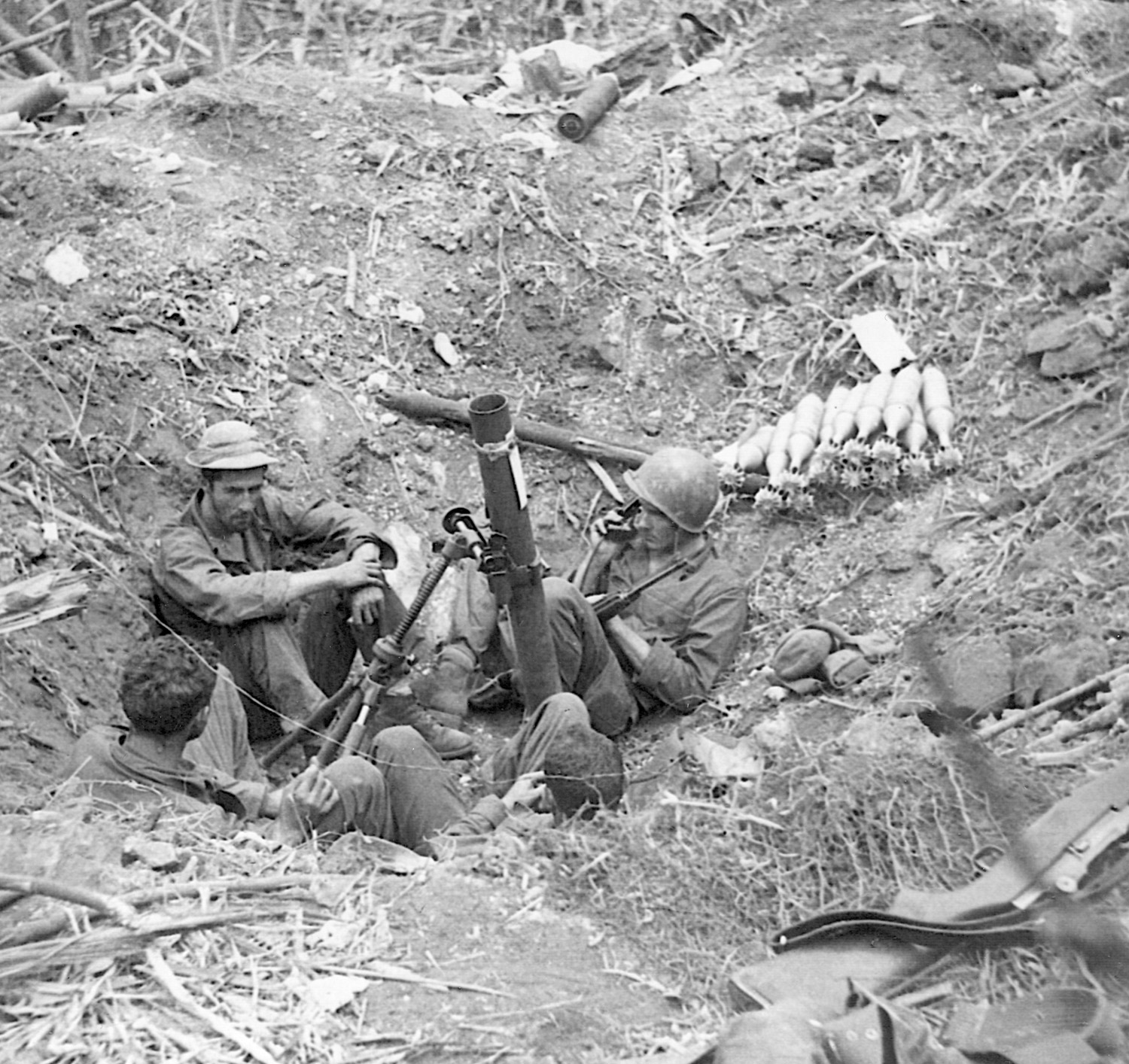
Planned by Stilwell and Merrill, it was “a brilliantly conceived and intrepidly executed attack” reminiscent of General Robert E. Lee’s Chancellorsville operation during the Civil War. The Marauder-Chinese force also assaulted a nearby ferry landing on the Irrawaddy River. The enemy were taken off guard and offered only ineffective resistance. At 3:30 pm that day, Hunter sent Stilwell the coded message, “Merchant of Venice,” meaning that the airstrip had been taken and transport planes could land.
The capture of the airstrip was a bold tactic, and Stilwell was delighted. The British were astonished that he could have reached Myitkyina without their aid, and Prime Minister Winston Churchill sent a message to Lord Mountbatten asking “why the Americans, by a brilliant feat of arms, have landed us in Myitkyina.” It was the first Japanese stronghold on the Asian mainland to be seized by the Allies.
A Missed Opportunity
Mountbatten, who had been preoccupied with British offensives elsewhere in Burma and in India, Sumatra, and Singapore, told Stilwell, “By the boldness of your leadership, backed by the courage and endurance of your American and Chinese troops, you have taken the enemy completely by surprise and achieved a most outstanding success by seizing the Myitkyina airfield.” He also praised the crossing of the Kumon Range as an incredible feat.
But then things began to go wrong. Colonel Hunter could have easily taken the town of Myitkyina with its garrison of 700 Japanese, but he had no orders to do so. So he stood firm and waited for the C-47 transport planes to bring in ammunition and rations. But the planes that arrived brought antiaircraft units and aviation engineers. They were there to repair an airstrip that did not need repairing.
Hunter fumed about the absence of ammunition he had been promised. General Merrill, meanwhile, had returned earlier to Stilwell’s field headquarters. He had said that he would be the first to land once the field was captured, and would then direct the attack on Myitkyina. But he fell ill again and did not arrive for 24 hours.
Merrill eventually directed the attack from a basha made of bamboo and parachute rayon, but soon after arriving at Myitkyina he was felled by another heart attack. Hunter took command again.
Odds Mount Against Second Battalion
Hunter launched two Chinese battalions against the enemy garrison, but twice the Chinese units shot at each other in the confusion and had to be withdrawn. The Marauders, meanwhile, battled with the Japanese street by street and house by house as the monsoon rains continued to pelt down. The enemy had reinforced the garrison before the End Run force had closed in. Units of two divisions and auxiliaries, a total of 3,500 men, now stubbornly defended the town. They were led by Lt. Gen. Renya Mataguchi, the victor of Singapore. The enemy had plenty of weapons and ammunition and were dug in behind strong earthworks. With little artillery, scant air support because of the weather, and no armor, the weary Marauders could not do much.
They were now in poor shape, individually and as a combat force. Up to a hundred men a day were being airlifted out with sickness, and up to 30 a day were showing symptoms of typhus. Eighty percent of the Americans had dysentery, and many cut their trouser seats open so that they could relieve themselves instantly. Men of the 2nd Battalion were so tired that they fell asleep during the battle, and the unit was eventually reduced to a dozen effective riflemen. The pressure was on to keep as many men as possible in the line, so medical officers refused to send men back to hospitals in Assam until they had run temperatures of 102 degrees for three days and had been checked by a board of doctors.
Low Morale And No Relief In Sight
The Marauders felt betrayed that they had not been relieved, and their morale sank lower. On May 25, Hunter sent Stilwell a note saying that his troops had been overextended and neglected and that they were now almost useless as a combat unit. He recommended that the 5307th Composite Unit be disbanded. By the end of May 1944, the original 3,000 Marauders had been reduced to about 200 still in action. Only about 1,300 had been able to participate in the Myitkyina operation, for which they were neither prepared nor equipped.
The British Chindits near Indaw were faring no better. They had been in the jungle for four months, and their commanders asked for relief. One column of 1,300 men was reduced to 30. But Stilwell refused the pleas because he feared that withdrawal would jeopardize his operations and further erode Chinese morale, which had never been high.
Marauders Reinforced With a Patchwork Of Troops
The Japanese at Myitkyina had orders to stand firm, and they fought on tenaciously. The Allied manpower situation became critical, so Stilwell scraped the bottom of the barrel to bolster the crumbling Marauders. He threw in more Chinese troops, two battalions of U.S. combat engineers from the Ledo Road construction project, and two battalions of replacements—artillerymen, military policemen, and truck drivers. They fought as infantry, although many of them had not fired a weapon since basic training.
General Stilwell also ordered that convalescents be returned to the line as the Allied force struggled to hold on at Myitkyina. By error, the order was transmitted as calling for men fit to walk. Sick and wounded Marauders at Assam hospitals were shipped back to Myitkyina despite the objections of medical officers. Men in one group were so sick when they arrived at Myitkyina that they were immediately re-evacuated.
Merrill, who was hospitalized himself at the time, joined the doctors in their protests. “A lot of my men got very indignant,” he said. “I was goddamn indignant myself, but I am positive that if we had asked for volunteers, every one of them would have gone back.”
No Longer “Orphans”; Merrill Reassigned
The hospitalized Marauders were not anxious to return to Burma. Many were suffering from acute nervous strain while languishing in the “pest-hole” Assam hospitals and were fearful of being sent back to the line.
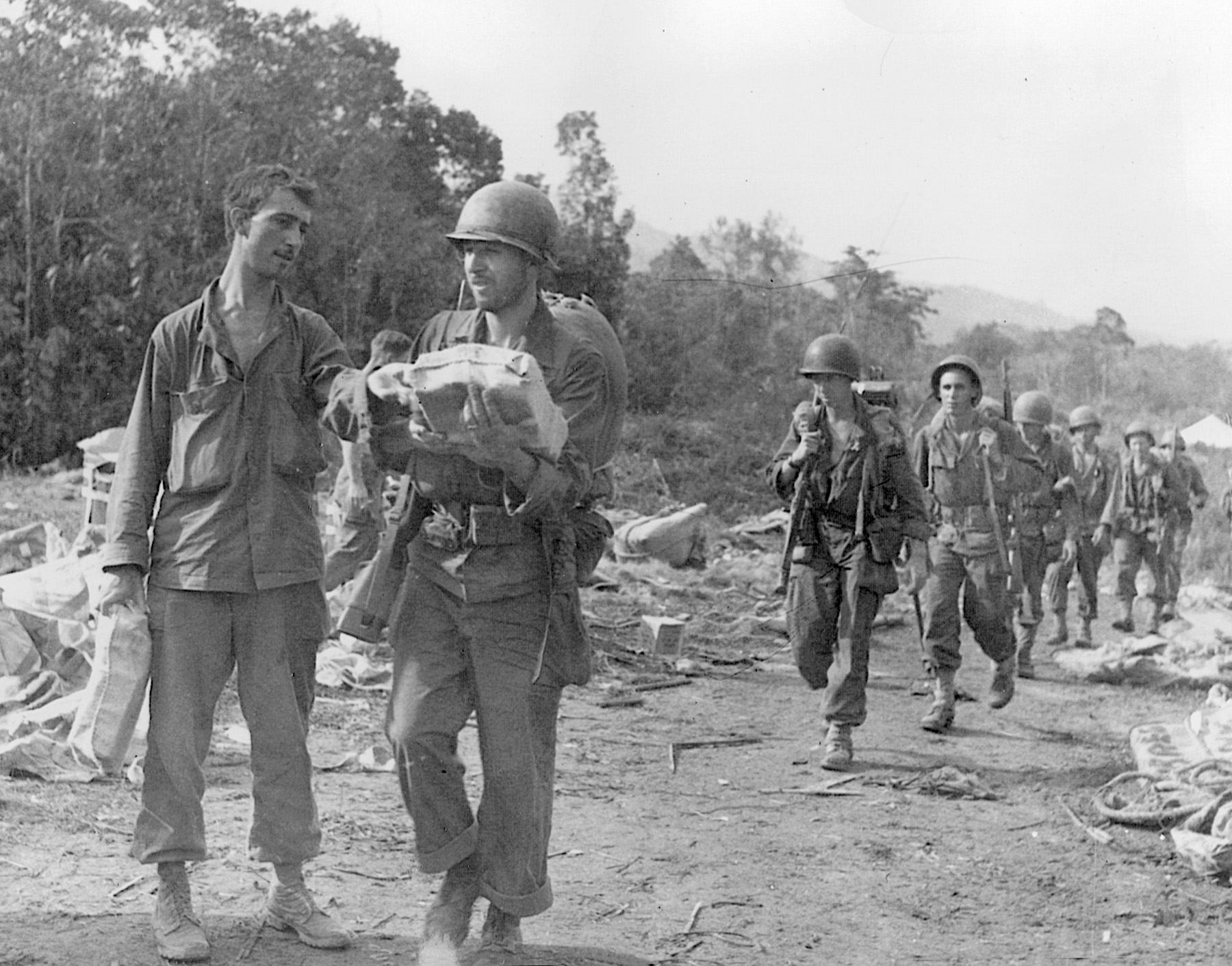
Some staged a sit-down strike, and some went berserk. They got drunk, ransacked officers’ quarters, demolished their own canteen, and terrorized Red Cross volunteers. In 10 days, Merrill declared the “storm in a teapot” was over. It was decided that the Marauders would be reorganized as a numbered regiment instead of remaining “orphaned” as an experimental unit. This would allow for a regular promotion system.
Emphasizing that Merrill was in no way to blame for the virtual disintegration of the 5307th, Stilwell transferred him to “less arduous but equally important duty” as chief of the Allied headquarters liaison group for the China-Burma-India theater. “General Merrill is a very high-class officer,” said Vinegar Joe, “and my full confidence in him should be obvious from the duty he is now performing.” Brigadier General Theodore F. Wessels was given command of the Marauders.
Allies Tighten The Noose On Japanese Forces In Burma
At Myitkyina, the battle raged on. Some of the American engineer units fled under fire, leaving their wounded behind, and the Japanese created confusion among the green GIs by dressing in Chinese uniforms. It rained day after day, and trench foot and jungle rot took a toll on the U.S., Chinese, and Japanese troops. Allied bombers pounded the enemy garrison and its supply dumps, but the Japanese clung on through June and July 1944. The garrison lost 790 men dead and 1,180 wounded, and the Allied lines closed tighter.
By the end of July the enemy was surrounded, and, as August began, they either pulled out or were captured. Escaping Japanese troops were ambushed by guerrilla groups of OSS Detachment 101.
Myitkyina had taken a heavy toll on the Allies. The Chinese had lost 972 dead and 3,184 wounded, and the Americans counted 272 dead and 955 wounded. Another 980 men were sick.
Opening The Airfield: A Turning Point In The South Pacific
Merrill’s Marauders were withdrawn in June and disbanded in August. The majority of the men were diseased or wounded, and those still on their feet had lost an average of 35 pounds. It seemed like an inglorious end, but their brief campaign became a legend in U.S. Army annals. Thanks to their efforts, and those of the equally hard-pressed Chindits, Allied transport planes were now able to use the Myitkyina airfield to fly to Kunming, China, bypassing the hazardous Hump. And the Ledo Road could be completed with Myitkyina in Allied hands. The first truck convoy started out over the 1,100-mile route from Ledo in Assam to Kunming on January 12, 1945.
Early in August 1944, the War Department released information that Merrill’s Marauders had suffered “an almost complete breakdown in morale,” and U.S. Senator Robert Rice Reynolds demanded an investigation. As Merrill himself told a Washington hearing, his men had been in combat for a hundred days, fighting three campaigns involving 750 miles of jungle marching, five major battles, and 32 minor engagements, climaxing with the assault on Myitkyina.
Merrill’s Service Fully Recognized
In September 1944, Merrill was promoted to major general (temporary). After serving as deputy Army commander in the CBI theater under Lt. Gen. Daniel I. Sultan, Merrill was transferred to the Pacific Theater. He became chief of staff of the 10th Army, which captured Okinawa under General Simon Bolivar Buckner, Jr., and later Stilwell. The New Hampshire warrior was also chief of staff of the Sixth Army, which liberated the Philippines, and was aboard the battleship USS Missouri for the Japanese surrender on September 2, 1945.
Merrill’s decorations included the Distinguished Service Medal, the Legion of Merit, the Purple Heart, and the Bronze Star, and he was made a commander of the French Legion of Honor and a member of the British Order of the Indian Empire and the Chinese Order of the Cloud Banner.
A Determined And Distinguished Post-War Career
After the war, he served as deputy chief of the U.S. Advisory Military Mission to the Philippines, but a third heart attack in Manila forced him to retire in July 1948. Meanwhile, Merrill kept in touch with his surviving Marauders. He wrote to them regularly, loaned them money when they needed it, and attended all their Labor Day reunions.
After moving to Concord, NH, with his wife, Lucy, General Merrill was named state highway commissioner by Governor Sherman Adams. Despite failing health, the former Army engineer energetically pushed through a 15-year highway construction program. Merrill and his wife had two sons, Frank and Thomas.
After attending a state highway officials’ conclave in New Orleans, Merrill suffered a fourth heart attack and died in a Fernandina Beach, Fla., motel on December 11, 1955. He was 52.
Leland Stowe, who, as a war correspondent, first met Merrill in China early in 1942, observed, “Frank possessed the rare granite of character, dedicated unswervingly to public service. Wherever he served, General Merrill placed duty to his country, to his state, and to his public obligations far above any personal ambition or consideration, and before his own health.”
At his request, the Marauders’ leader was buried at West Point near General Stilwell.
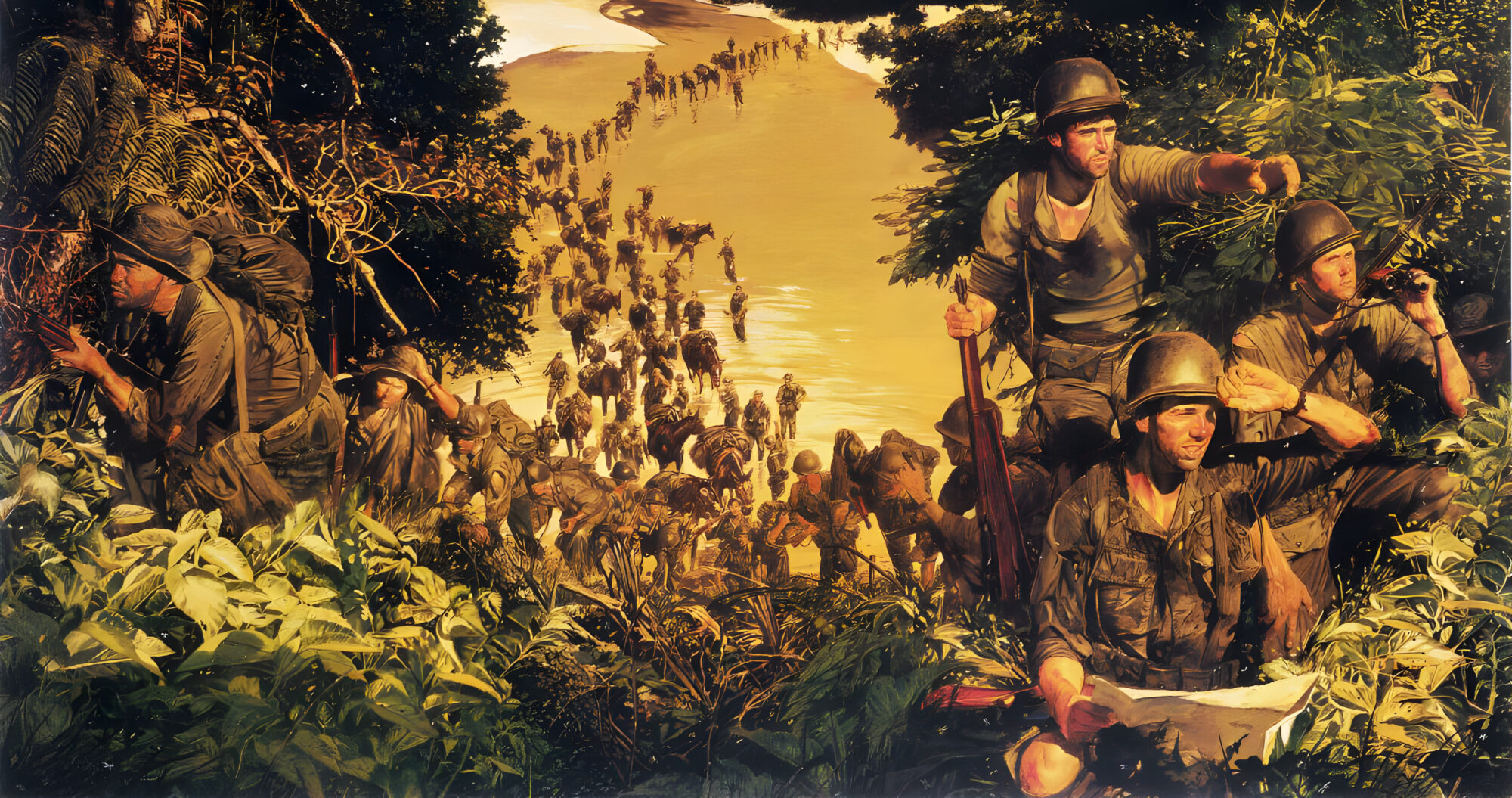
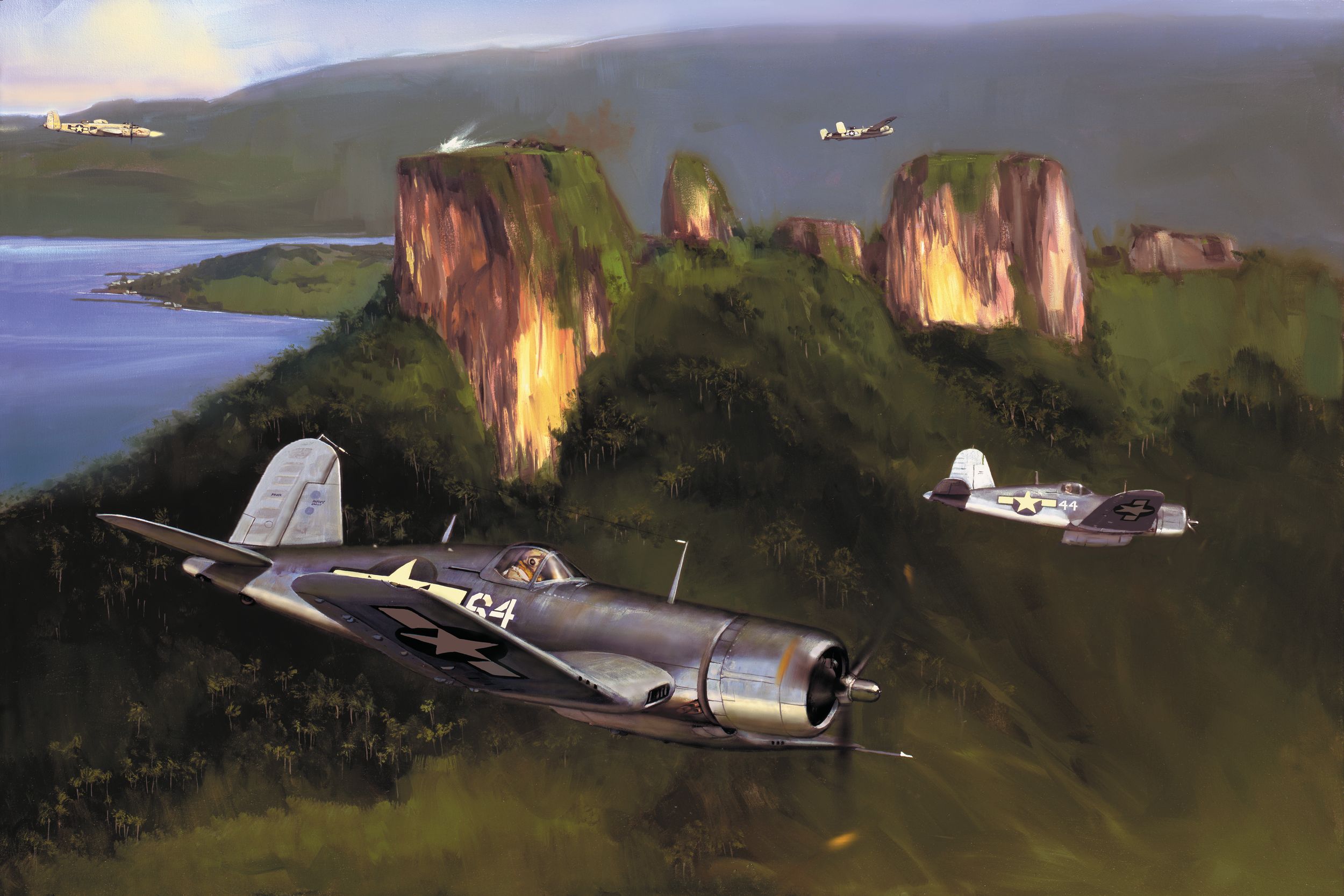
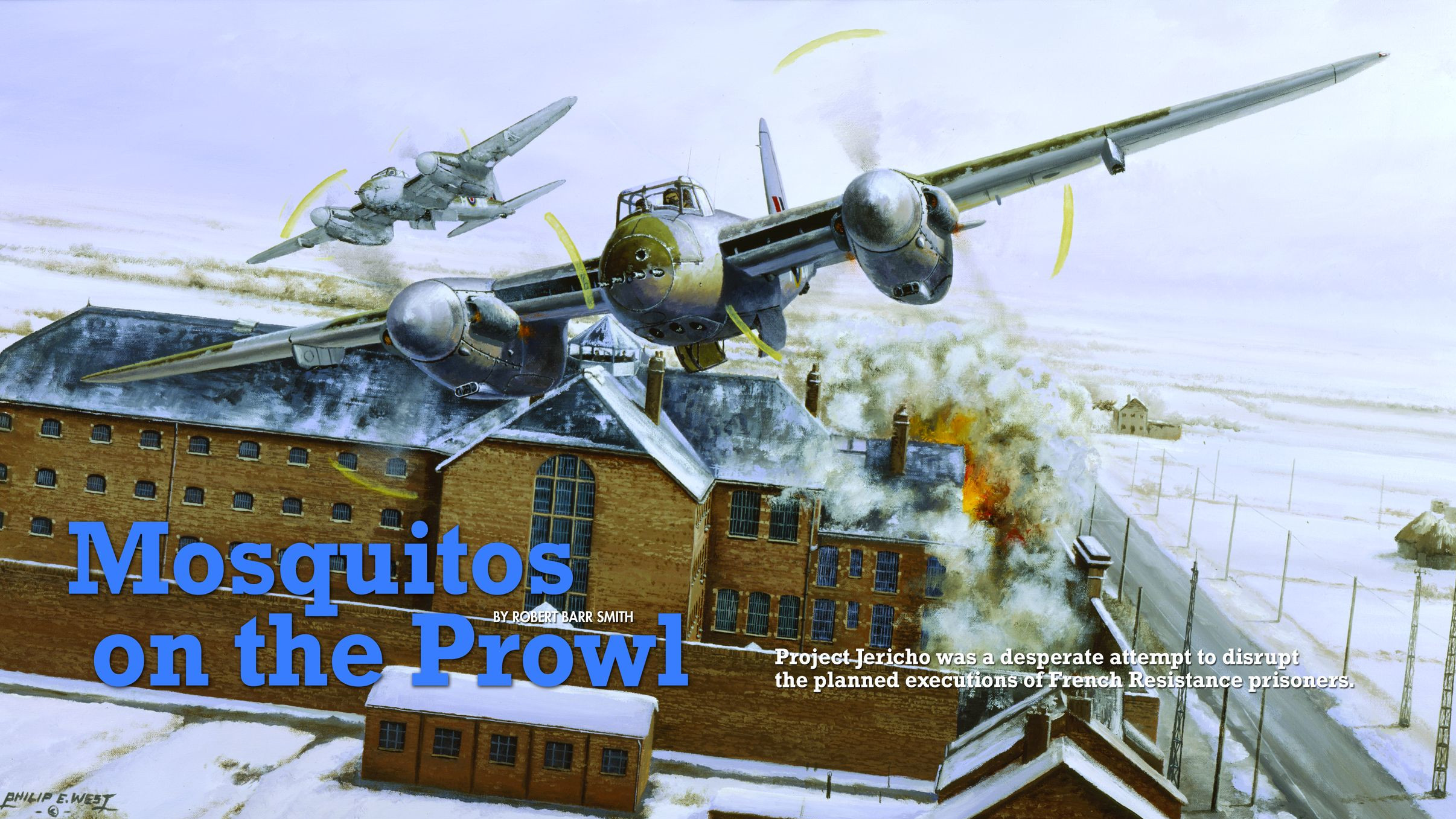
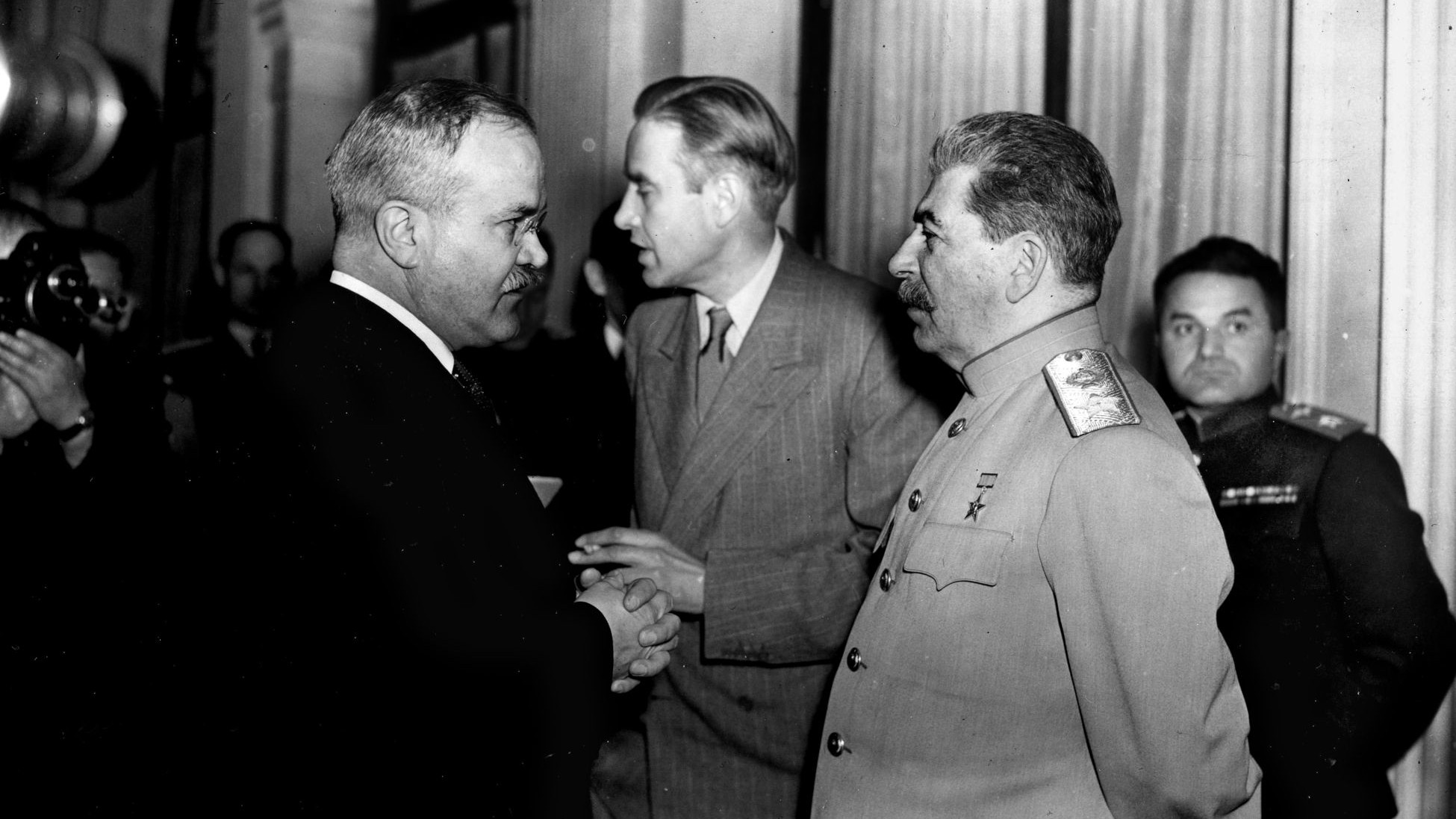
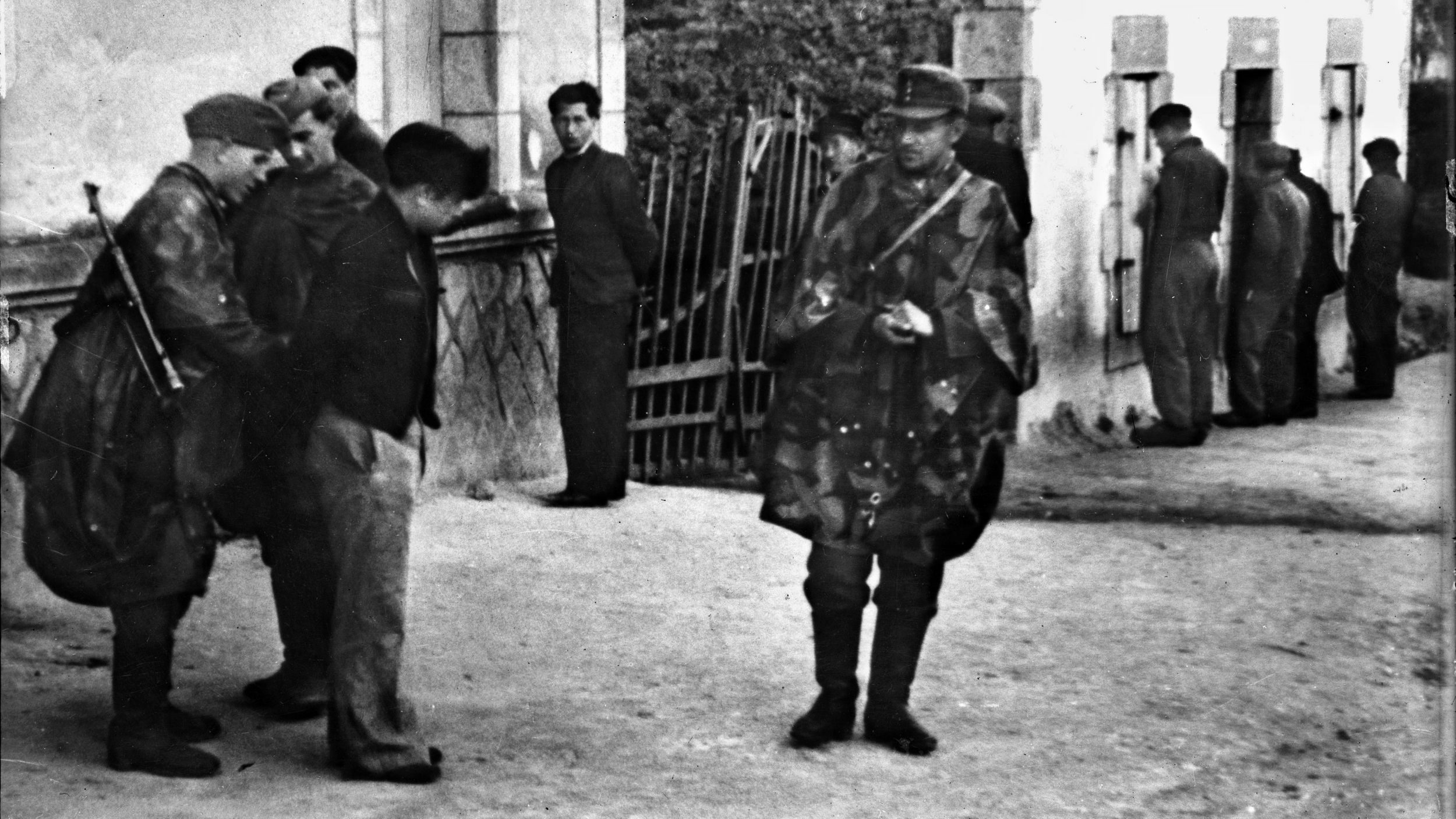
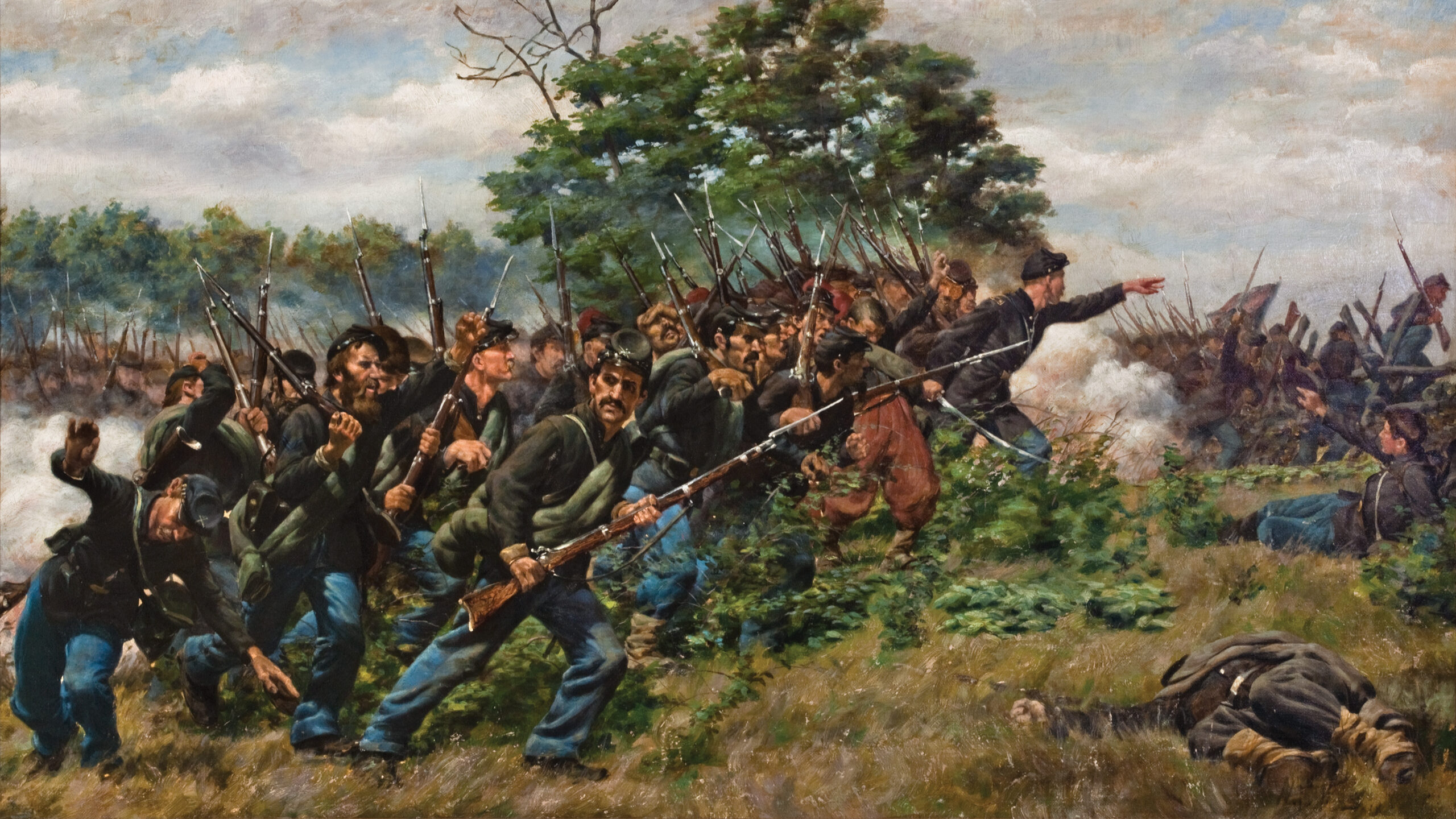
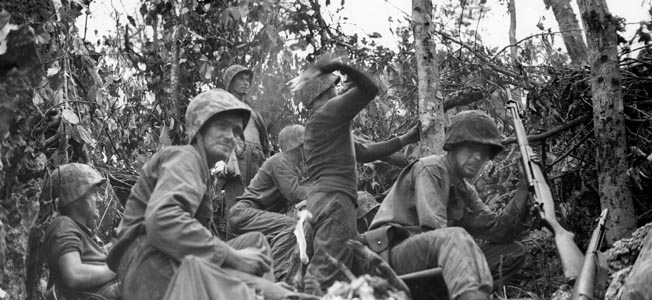
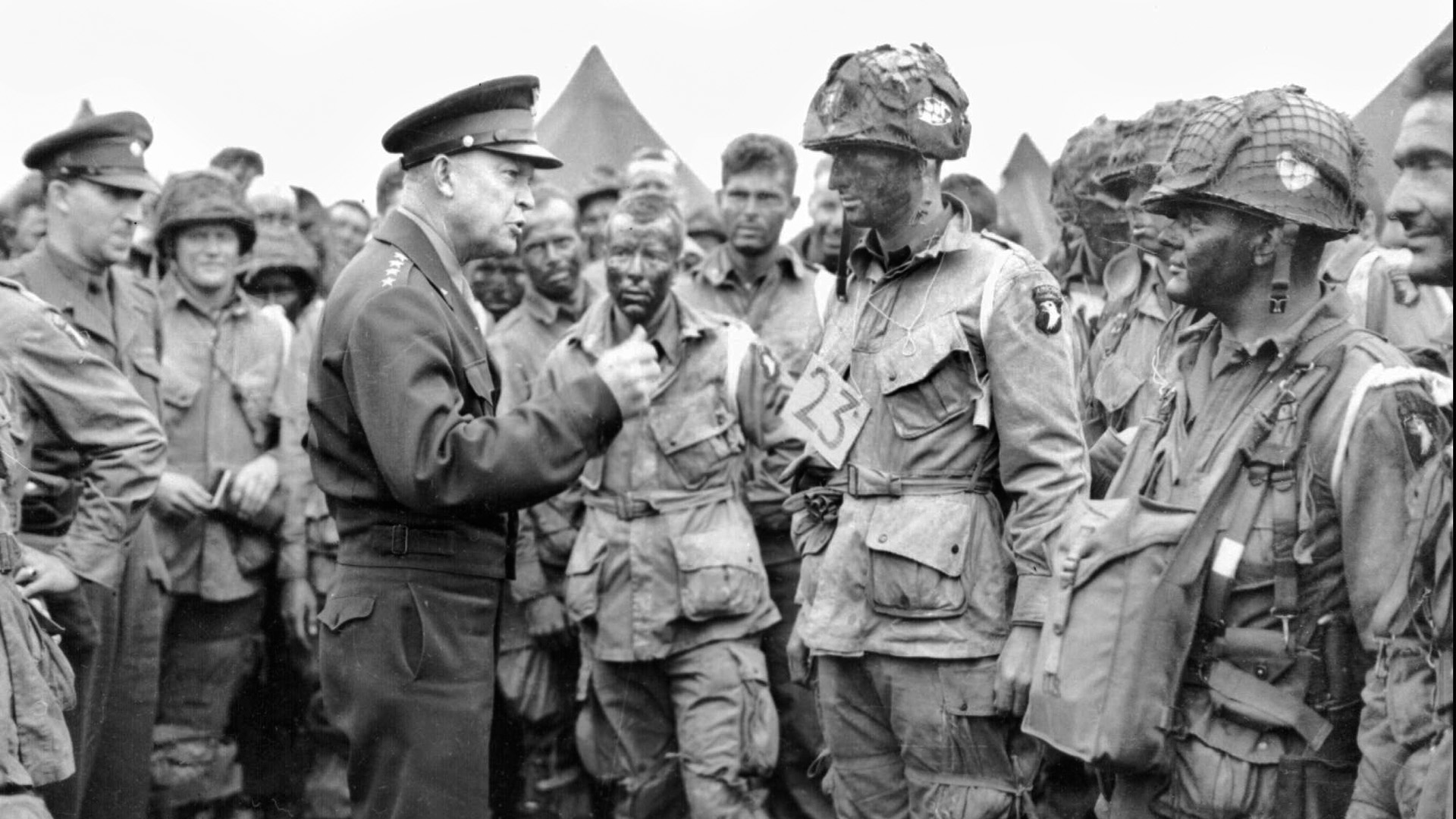
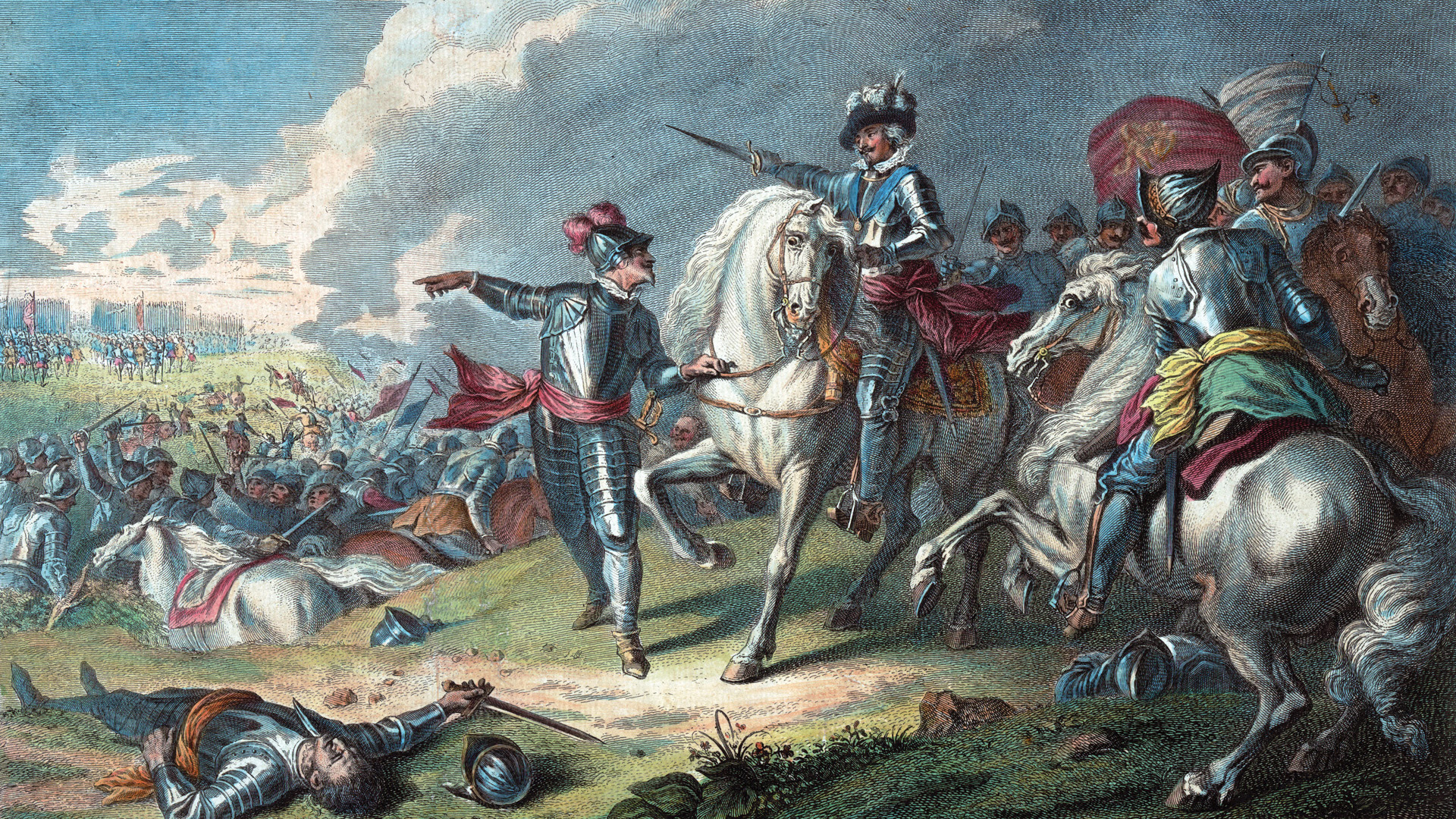
My 1st Sgt in the 25th AIB, 1st Armored Division , George ‘Chappy’ Mamula Ft. Hood, Texas 1953 was in Merrill’s Marauders. He told me many a story about that time. He died in a Veterans Home in PA. many yrs ago. I never forgot Chappy,he was quite a MAN.